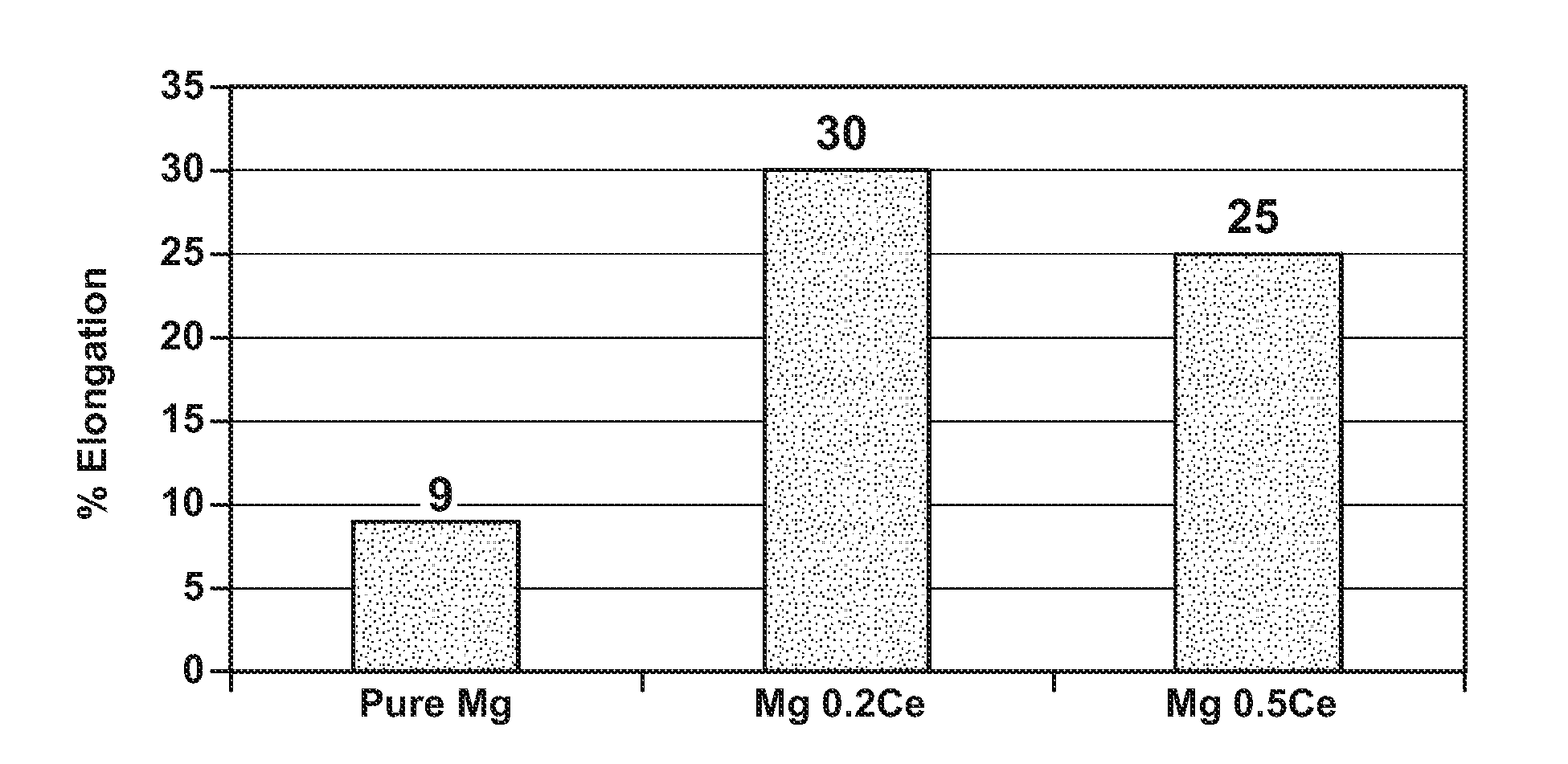Forming magnesium alloys with improved ductility
- Summary
- Abstract
- Description
- Claims
- Application Information
AI Technical Summary
Benefits of technology
Problems solved by technology
Method used
Image
Examples
Embodiment Construction
[0018]The description of the following embodiment(s) is merely exemplary in nature and is in no way intended to limit the claimed invention, its application, or its uses.
[0019]Magnesium alloys comprising primarily magnesium with small additions of cerium may be formed by a hot deformation process into a wrought article that exhibits improved ductility at room temperature. Here room temperature means a typical in-door ambient temperature of, for example, about fifteen to about thirty degrees Celsius. The wrought article may be in a final product shape. However, the room temperature ductility of the wrought article makes it useful for further deformation processing into a desired different shape. The unexpected ductility of the hot deformed magnesium body is attributable to its cerium content and hot deformation processing that contribute to an alteration in slip distribution, a decrease in yield strength, an increase in work hardening, a reduction in grain size, and a recrystallized ...
PUM
| Property | Measurement | Unit |
|---|---|---|
| Temperature | aaaaa | aaaaa |
| Temperature | aaaaa | aaaaa |
| Fraction | aaaaa | aaaaa |
Abstract
Description
Claims
Application Information
 Login to View More
Login to View More - R&D
- Intellectual Property
- Life Sciences
- Materials
- Tech Scout
- Unparalleled Data Quality
- Higher Quality Content
- 60% Fewer Hallucinations
Browse by: Latest US Patents, China's latest patents, Technical Efficacy Thesaurus, Application Domain, Technology Topic, Popular Technical Reports.
© 2025 PatSnap. All rights reserved.Legal|Privacy policy|Modern Slavery Act Transparency Statement|Sitemap|About US| Contact US: help@patsnap.com


